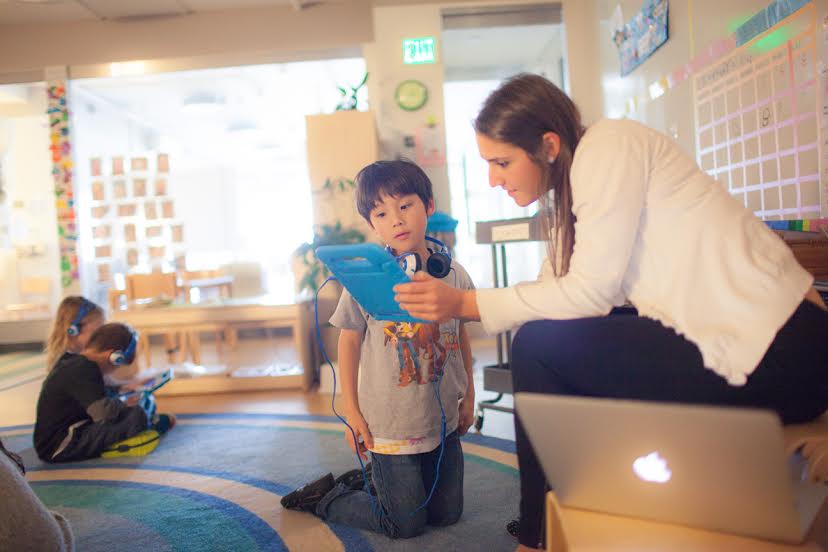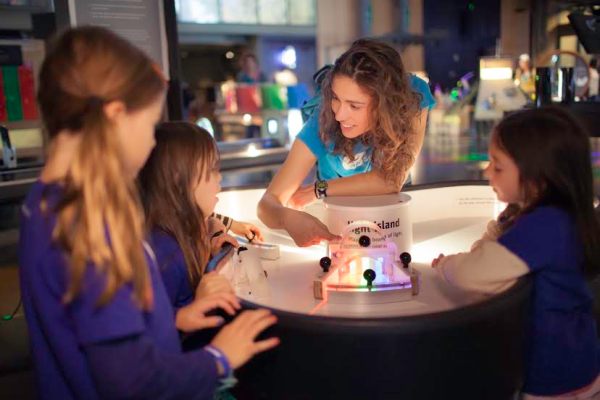In one of the biggest funding rounds of the year in education and technology, Altschool is raising $100 million from Founders Fund, Mark Zuckerberg and Priscilla Chan’s foundation along with other venture backers and philanthropic organizations.
The move will mark the company’s shift from proving out its ideas around personalized education through building its own schools to sharing or licensing its individualized learning model with other educators that want to adopt its approach. It’s an ambitious and major test as to whether Altschool’s model can be done affordably and accessibly at scale in other parts of the country.
“We have created an operating system that not only our own schools can use, but an expanding universe of schools that start to look more like Altschools,” said CEO Max Ventilla, who said he expects the company to triple or quadruple its number of locations over the next few years to roughly 20 schools. “Our platform can remove a lot of the kinds of costs and headaches that are associated with running a one-off school.”
This round is split 50-50 between conventional venture firms like existing investor Andreessen Horowitz and other philanthropic organizations like Laurene Powell Jobs’ Emerson Collective. Altschool is a B-corp, a special type of corporate structure where the goal is to not only be a profitable entity, but to also have a positive impact on society. And that’s written in and one of the entity’s legally defined goals.
Like A Reggio Emilia-Approach Intertwined With Technology
Ventilla, who previously sold social question-and-answer startup Aardvark to Google, is one of a handful of entrepreneurs who have crossed over from the world of consumer Internet and social networking into big and hairy problems in highly politicized and regulated areas like health and K-12 education. Brian Singerman, the Founders Fund partner who led the round, recently backed another entrepreneur, Joshua Kushner, in another $100 million round he led toward healthcare for the insurance company Oscar a few weeks ago.
A couple of years ago, when Ventilla started looking at schools for his children in San Francisco, he was frustrated with the many waiting lists for schools across the city and that the education he would have paid for wouldn’t be suited to the economy that we live in today with flexible employment that prizes entrepreneurial and creative thinking.
He pointed out how the current U.S. educational system feeds top jobs today.
“If you look at the best employers, they often pick from the top 10 colleges. Then it’s just markedly easier to go to one of those colleges, if you’ve gone to one of the top 100 high schools in the country,” he said. “We put a huge amount of stock in a process where the things that drive quality in the traditional educational model come from scarcity and very positive student selection.”
So instead of homeschooling his children, Ventilla began building his own schools from scratch to see if he could generate a model or platform that marries some of the learnings of Sal Khan’s experiments in individualized learning with real hands-on teaching in classrooms.
While those schools aren’t necessarily cheap at north of $20,000 per year, they are 10 to 15 percent less expensive than other private schools in San Francisco and 40 percent of Altschool’s students are on some form of financial aid. The ultimate vision is to scale the model down to a point where the price is marginally more than what it costs to educate a child in the public system.
In Altschool’s model, kids join mixed-age classrooms where they switch between project-based learning models and an individualized “playlist” of modules testing different schools. The student-to-teacher ratio is about 1 to 7, but it will settle more closely to 1 to 10 as the network expands.
One other notable difference is that Altschool uses “micro-schools” that they can quickly spin up in unusual urban environments instead of making very capital-intensive decisions around acquiring land for building campuses. That makes it more flexible, especially as major urban areas in the United States have grown their populations over the last few decades but haven’t been able to scale their schooling infrastructure to match that growth.

Altschool’s philosophy is based on “child-centered learning” where teachers follow the natural interests of students. It’s like a Reggio Emilia-approach mixed with tech. That’s a community-based schooling model that arose in post-war Italy where children are considered to have rights and are given more control over their learning.
“This is a mentality that assumes that children are incredibly capable learners, and your role is to support the agency of that child in their creative and cognitive capacities,” he said. “That’s moving from a model where a student’s head is this empty vessel that you pour knowledge into.”
When I visited a campus in San Francisco’s Marina District a few weeks ago, there were pre-teens building art installations and Arduino-based gum-ball machines. One project let the students even architect and re-design the school’s upper deck to house rabbits in SketchUp, a 3D modeling program.
While some Altschool teachers can earn north of $100,000 a year, Ventilla stresses that giving teachers flexibility and more autonomy is a more important motivator and a better way of attracting educators. When we talked the much-celebrated Finnish public educational system, he said that increasing mentorship and career development time was a key component of turning teaching into one of the more desirable professions in the country.
“While it’s not necessarily a model that’s replicable in the U.S. given our scale and demographics and the way our schools are funded, those lessons can apply to Altschool. If you give teachers more autonomy and if you create a job that looks more like a 21st century job and have teachers spend less time being disciplinary babysitters, you will keep people and more importantly, you’ll grow them into people who are better teachers.”
A Software Platform For Operating Schools
Of course, venture investors didn’t back Altschool just because it builds one-off private schools here or there. The bet is that it can scale.
So between the company’s 100 employees, the staff are one-third educators, one-third operators and one-third technical.
The technical team is building out a software platform that includes everything from personalized learner profiles that capture where a child is to tracking attendance to a “playlist” of interactive educational models that teach subjects from geometry to the parts that make up a single biological cell.
The 40 people on the platform team include product managers, user researchers, designers and engineers that work in a tight feedback loop with Altschool’s educators to build out software and features that are useful to them. In many ways, this is a kind of rebuttal to how traditional educational technology models work where research and development teams of giants like Pearson or McGraw-Hill or new startups are more siloed and companies effectively have to use an enterprise sales model to get large urban districts to adopt their tools.
“I’ve been watching educational technology for many years. There will be really smart people who think they have solutions. Then about six months before they launch, they’ll bring on an educator to help them drive teacher adoption. But that’s too late,” said Altschool’s director of education Carolyn Wilson, who is a 30-year teaching veteran who also researched school reform at Stanford University.
“Our engineers stay at the school all day. It’s expensive, but the reason we do that is our engineers and designers need to understand the workflow for the student and the teacher.”
In Altschool’s platform is a Learner Portrait and a Personalized Learning Plan, which you can think of like a modern-day and iterative answer to the traditional report card. Wilson said the leaner portrait captures not only a child’s test scores and grades, but also what their passions are and what their long-term memory and mental energy is like.
“I have a vision for the parents that includes a set of products that form a continuous feedback loop between them, the teacher and the child,” said Raj Bhatia, the company’s vice president of product. “I liken it to CRM for the child. What that means is we’re really taking all of the information about the child and keeping it with them so that anybody who interacts with them can take full advantage of everything we know. It’s a live snapshot of what they’re learning and where they’re going.”
There’s also a parent app that helps families stay in touch with the school and educators, in case their kids are sick and need to stay home. There’s something called a ‘TetraPod,’ or a wiki-like product that helps the best policies and practices bubble up across the Altschool network.
Ultimately, the company plans to license out these products. There will be a mixed model of “first-party schools” which are schools that strongly adhere to all of Altschool’s practices and then “third-party schools” that can adapt the company’s platform to whatever their needs are.
In that way, that’s the way the company’s model tries to resolve some of the underlying and inherent tensions in the American educational system between autonomy and accountability. (The U.S. has a very fragmented approach to K-12 education because the system is largely managed and financed at state or local levels, which is why federal reform programs like Race To The Top or No Child Left Behind have often fallen so short of expectations.)
“We should give kids what they need, not exactly what the school across town has,” said Wilson, who said that she had been a supporter of charter schools. “Just like our philosophy centers on having a very holistic approach to the child, real school reform has to look holistically at children within their communities.”
With Altschool’s financial aid model, educators and schools are blinded from knowing which students are on aid and which are not. They don’t track the racial make-up of the student body either.
“We want to understand every individual child at a very personalized level, not at a group level. There are inequities in education and I’m not dismissing the importance of that,” Wilson said. “But while we do seek to have a diverse community in all of our schools, we’re not going to check off those boxes.”
The company is set to launch its first schools outside of the Bay Area this year in Brooklyn.
And after that? It’s the rest of the country.
